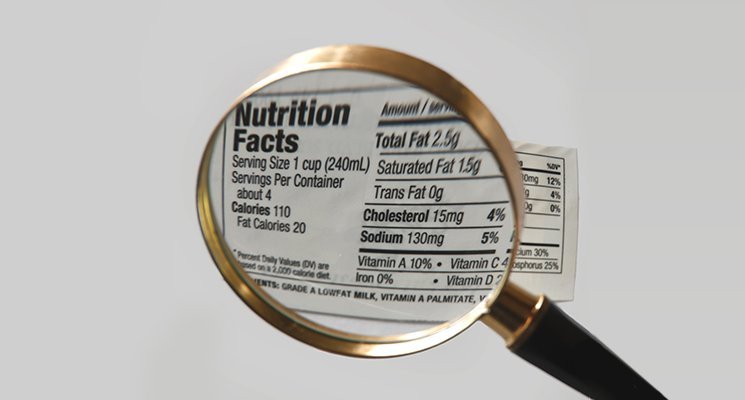Over on the IHRSA blog, there’s an interesting post about how small gyms in rural towns tackle the unique challenges they face. It’s true that for any health club or sports facility with a small pool of members and clients to draw from, there are difficulties that clubs in more populous places don’t experience. You might compete with larger clubs nearby, vying hard for attention against brand-name franchises. Or you might struggle to fill up your classes or operate programs or leagues that are tricky to manage without a certain bulk enrollment.
The best strategy? Use your club size to your advantage. Sisters Athletic Club, in Sisters, Oregon, makes a point of creating a homelike atmosphere in its facility. First of all, the gym provides no membership cards. Instead, even though the club boasts 1,600 members, employees are required to know every member and greet them by name when they enter. Here’s where small-town advantages come into play: The town has only 2,000 residents. Chances are, the member entering is your neighbor anyway. Also, the club strives to create an anti-gym feel. Outside, the 19,000-square-foot facility looks like a lodge. Inside, a rock formation fills the lobby, classical music infuses the air, and an art gallery spreads out near the front desk. You can’t see the cardio court from the entrance, and you don’t smell anything that even vaguely suggests you’re in a gym. The hominess is complemented by fastidiousness; everything is spotless.
Playing up the sense that the facility is an extension of their members’ homes is crucial for Sisters Athletic, in part because the club’s biggest competitor is nature. There’s so much skiing, biking, and hiking nearby that the facility has to give members the sense that they’re getting something they can’t possibly get outdoors. It’s precisely its small, comfortable feel that allows it to do so.
The situation for B-Fit 24/7 Fitness in Adrian, Michigan, is different: The local population consists of 24,000 and there are big-name competitors not too far away. So, B-Fit has a bigger pool to draw from than Sisters Athletic Club, but there are more options for the folks who make up that pool. B-Fit has to really stand apart from the crowd in order to create a loyal clientele and attract new members.
Their solution? The club has made itself the only one in the area that’s open 24 hours, and it pitches itself as the “ungym” — unlike the traditional gym model, B-Fit does not require members to sign a contract, and it refunds members who don’t reach their goals. Also, the club works hard to forge relationship with the 80 percent of the population that isn’t naturally exercise-oriented.
For sports facilities in similar positions — either with only a tiny pool to draw from or with big-fish competitors nearby and a relatively small pool of potential clients — smart marketing, along with lots of event hosting, might be the key. Looking to fill up your baseball league? Try putting up flyers in towns one to two hours away; parents will go surprisingly far to keep their kids interested in an activity, and adult players who are committed enough to join a league probably won’t mind the travel. As far as events go, don’t limit yourself to birthday parties. Put the idea in the minds of potential customers that you are there for all occasions, from celebrations for specific events and holidays to celebrations for no reason at all.
The overriding lesson is this: What you think are weaknesses might be turned to advantages. Exaggerate the very qualities that seem limiting — your small size, the restricted pool you’re in — and figure out what about those things might appeal to those around you.




 You struggle with retaining members and signing up new clients. How could you not? With the proliferation of low-cost health clubs, wearable technology, home video exercise plans, and YouTube workout videos that go viral within hours, traditional fitness facilities face enormous challenges these days — and experts tell us we’re only at the beginning of what will be a sea change in the way the fitness industry operates. In this blog space there’s been a lot of talk about facing the challenges by building communities; investing in trainers, staff, and other human resources; and incorporating technology. Here’s another approach to consider: becoming the solution.
You struggle with retaining members and signing up new clients. How could you not? With the proliferation of low-cost health clubs, wearable technology, home video exercise plans, and YouTube workout videos that go viral within hours, traditional fitness facilities face enormous challenges these days — and experts tell us we’re only at the beginning of what will be a sea change in the way the fitness industry operates. In this blog space there’s been a lot of talk about facing the challenges by building communities; investing in trainers, staff, and other human resources; and incorporating technology. Here’s another approach to consider: becoming the solution.
 Every year around this time of year, it feels like someone has turned the dial up a couple notches. Whereas earlier in the fall everything was just busy, suddenly now everything is insanely chaotic. Veteran’s Day and Thanksgiving break mean quite a few no-school days, and there always seem to be a couple professional development and parent-teacher conference half-days around the same time. At work, everyone is scrambling to finish projects before the end of the year, and all of those projects seem to land up on your desk at the same time. Meanwhile, you find yourself invited, in the span of three weeks, to more parties than you’ve been invited to all year. And then there’s the holiday shopping, cooking, planning, and wrapping to do (don’t even ask me about season’s-greetings cards — I gave up on those years ago).
Every year around this time of year, it feels like someone has turned the dial up a couple notches. Whereas earlier in the fall everything was just busy, suddenly now everything is insanely chaotic. Veteran’s Day and Thanksgiving break mean quite a few no-school days, and there always seem to be a couple professional development and parent-teacher conference half-days around the same time. At work, everyone is scrambling to finish projects before the end of the year, and all of those projects seem to land up on your desk at the same time. Meanwhile, you find yourself invited, in the span of three weeks, to more parties than you’ve been invited to all year. And then there’s the holiday shopping, cooking, planning, and wrapping to do (don’t even ask me about season’s-greetings cards — I gave up on those years ago).
 I was talking the other day with a friend of mine who manages a gym in New York City. He had recently attended an informal networking meeting for gym managers, and he said they got reviewing the basics of gym management — the fundamental tasks that gym managers should undertake each day to make sure they’re doing what needs to be done. I got him to share his notes with me, and now I’m sharing some of them with you. Nothing here is earth-shattering, but even my friend, who’s been in the field for at least a dozen years, found it useful to have a refresher in the basics. Here’s what the group covered:
I was talking the other day with a friend of mine who manages a gym in New York City. He had recently attended an informal networking meeting for gym managers, and he said they got reviewing the basics of gym management — the fundamental tasks that gym managers should undertake each day to make sure they’re doing what needs to be done. I got him to share his notes with me, and now I’m sharing some of them with you. Nothing here is earth-shattering, but even my friend, who’s been in the field for at least a dozen years, found it useful to have a refresher in the basics. Here’s what the group covered:
 I had a nice little visit to the emergency room the other day. I injured my foot, and I wish I could say I did so while training for a marathon or participating in an Insanity workout or some such thing, but truthfully I was just racing my seven-year-old downhill, and I landed on it awkwardly.
I had a nice little visit to the emergency room the other day. I injured my foot, and I wish I could say I did so while training for a marathon or participating in an Insanity workout or some such thing, but truthfully I was just racing my seven-year-old downhill, and I landed on it awkwardly.
 I (and millions of other people) have a new obsession: high-intensity interval training (HIIT). Seemingly everyday there’s a new study showing how effective it is as a method for keeping the heart in shape, burning fat, increasing muscle, and generally just feeling great. But what I love most about it, and I know I’m not alone in this, is how quickly it’s over. True, for the seven, twelve, twenty, or however many relatively brief minutes you’re doing it, you think you’re killing yourself — but then you’re done (done except for the fact that, as an added bonus, you raise your metabolism and continue burning calories at rest).
I (and millions of other people) have a new obsession: high-intensity interval training (HIIT). Seemingly everyday there’s a new study showing how effective it is as a method for keeping the heart in shape, burning fat, increasing muscle, and generally just feeling great. But what I love most about it, and I know I’m not alone in this, is how quickly it’s over. True, for the seven, twelve, twenty, or however many relatively brief minutes you’re doing it, you think you’re killing yourself — but then you’re done (done except for the fact that, as an added bonus, you raise your metabolism and continue burning calories at rest).
 Having dedicated members is every fitness facility’s dream — the ones who come in regularly, several times a week, pushing themselves through a routine that leaves them feeling good about themselves and good about the place where they choose to work out. But what if members become not so much dedicated as compulsive? Is that good for them? And is it good for your facility?
Having dedicated members is every fitness facility’s dream — the ones who come in regularly, several times a week, pushing themselves through a routine that leaves them feeling good about themselves and good about the place where they choose to work out. But what if members become not so much dedicated as compulsive? Is that good for them? And is it good for your facility?
 Back in June, for the third year in a row, Minneapolis-St. Paul, Minnesota, won the American College of Sports Medicine’s number-one ranking for fittest metropolitan area. Last week, Virginia Beach, Virginia, won Facebook’s number-one ranking for the same title. But were these rankings based on the same factors and set to be used for the same purposes? Club Industry took a good look at both claims and explained the differences.
Back in June, for the third year in a row, Minneapolis-St. Paul, Minnesota, won the American College of Sports Medicine’s number-one ranking for fittest metropolitan area. Last week, Virginia Beach, Virginia, won Facebook’s number-one ranking for the same title. But were these rankings based on the same factors and set to be used for the same purposes? Club Industry took a good look at both claims and explained the differences.